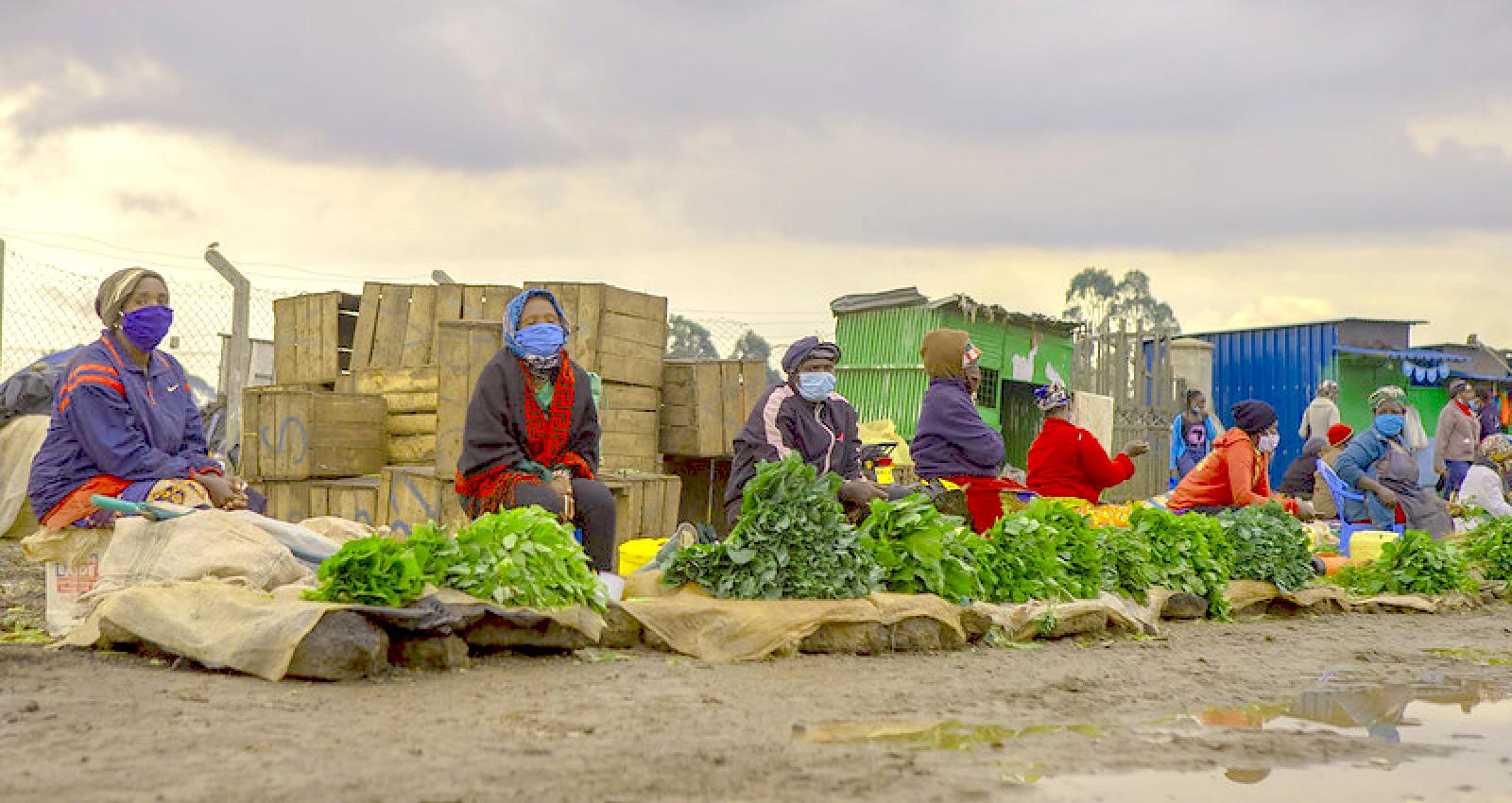The COVID pandemic and global hunger
Lessons from past crises to improve food security.
Lessons from past crises to improve food security.
By: Bekele Shiferaw
As part of the response to the global food crises triggered by the 2008 economic and financial crisis, a 2009 World Bank Group project in Senegal tripled the enrollment of vulnerable children under age 5 in nutrition programs, from 22% to 65%, and almost doubled the number of women in the same communities providing exclusive breast-feeding, from 34% to 62%. The result was that food insecurity in the targeted areas dropped, even while it increased in other areas.
This illustrates the benefits of ensuring timely access to nutritious foods coupled with nutrition education to protect the most vulnerable and help reduce the risk of malnutrition over time. With the economic effects of the pandemic threatening to push as many as 330 million people into acute food insecurity in the world’s least developed countries, these lessons are now more important than ever.
At the Independent Evaluation Group (IEG), we have drawn from our evaluations of the World Bank Group’s past responses to food crises—especially those linked to the aftermath of the 2008/09 financial and economic crises—and have identified nine overarching lessons to guide the current response and its effectiveness in improving food security and nutrition.
The majority of the lessons are focused on the priority during a crisis of ensuring access to food and nutrition for the vulnerable:
When providing emergency support as part of a food crises response, focus on timely interventions and approaches for improving nutrition for the most vulnerable and at risk of starvation. In Nicaragua, the 2009 Price Vulnerability Food Crisis Project effectively helped to mitigate the negative health and nutritional effects that the global food crisis was having on pre -primary and primary school age children at home by integrating nutrition education with nutritional lunches at school.
Projects that support local food production and vegetable gardens improve nutrition and enhance resilience in vulnerable communities. In Tajikistan, a 2008 World Bank Group project used community production groups and private agricultural input dealers to increase the supply of seed and fertilizers, and thereby boost local production of grains. This mitigated the negative impact of high and volatile food prices at that time.
When food is available in local markets, targeted cash transfer programs can be more efficient than food distribution in improving food security. Direct cash transfers can be more cost-efficient than direct food transfers and can have the added effect of stimulating the local economy via indirect market benefits to farmers and workers in food value chains. In South Sudan, the 2008 Emergency Food Crisis Response Project provided vouchers for 6000 mothers of children under‐five years of age and vulnerable households to access nutritious foods in the local market, supported farmer-based organizations and mother support groups on fortification, nutrition practices, and nutrition-sensitive farming - an effort that reduced malnutrition and improved food availability and dietary diversity amongst farming communities.
Both cash transfer and food distribution programs, however, require rigorous and transparent targeting to reach the most vulnerable. In emergency situations where local food stocks are depleted and acute hunger and malnutrition are serious issues, direct distribution of nutrient-dense foods to the affected and the most vulnerable households or individuals is essential. In both cases, verification of beneficiaries and selection transparency are key to ensuring the benefits are reaching the populations most in need. A 2010 project in the Philippines, for instance, used the national database of poor households to make sure it was targeting the most vulnerable.
Non-targeted instruments such as tax reductions for food staples may not benefit vulnerable consumers. A 2008 project in Djibouti aimed to address acute malnutrition by providing budget support for the elimination of direct taxes on basic food items, and therefore making food more accessible to vulnerable households by lowering its cost. An IEG evaluation found that the move to eliminate taxes on consumer foods failed to lower consumer prices for vulnerable households and the benefits were largely captured by the higher income households. There are several options for ensuring that price benefits from instruments such as tax reductions reach the most vulnerable, such as direct distribution or issuing vouchers to targeted beneficiaries that can be redeemed at designated outlets for lower-priced food.
Under fragile and conflict situations, World Bank Group partnerships to identify and reach the food insecure have not always been effective at targeting the most vulnerable. When the World Bank Group partnered with two United Nations food agencies (the World Food Programme and Food and Agriculture Organization) to provide emergency assistance in the Central African Republic after a coup d’état in 2013, the partners were effective in distributing food but not as effective in identifying and targeting the most vulnerable and food insecure groups. An IEG evaluation of the project found that the assistance program could have benefitted from additional technical support from other specialized agencies, such as UNICEF or the International Committee of the Red Cross, which were providing health and nutrition services to displaced and vulnerable populations at that time.
Digital solutions that reduce contact and the risk of spreading COVID can be used to provide cash to the food insecure, but donors must ensure that these solutions are accessible to the poor. An ongoing social safety net project in Côte d’Ivoire works with mobile money operators to overcome some of the operators’ stringent formal identification requirements for cash transfers to reach the poor. The project also aims to cut down on person to person contact by providing information by radio, instead of during community meetings and home visits.
Finally, building back better after the pandemic will require a focus on strengthening food systems at all levels to enhance resilience:
Building resilience in food security requires investing in food production, food storage, distribution and marketing systems that enhance resilience to shocks. In response to steep increases in food prices, a 2009 project in Nicaragua combined an agro-seed program to revitalize food production with an emergency school feeding program. The number of preschoolers receiving lunches increased by 33% and the number of primary school-age children increased by 148%. For both groups, the number of days that children received lunches jumped to 172 days, from 65 days. Therefore, the project not only addressed emergency needs, but also built resilience in agriculture production for the future.
For more details, please see the learning note that elaborates on each of the nine lessons.
Visit the IEG Lessons Library for a range of resources relevant to the COVID-19 response.

Add new comment